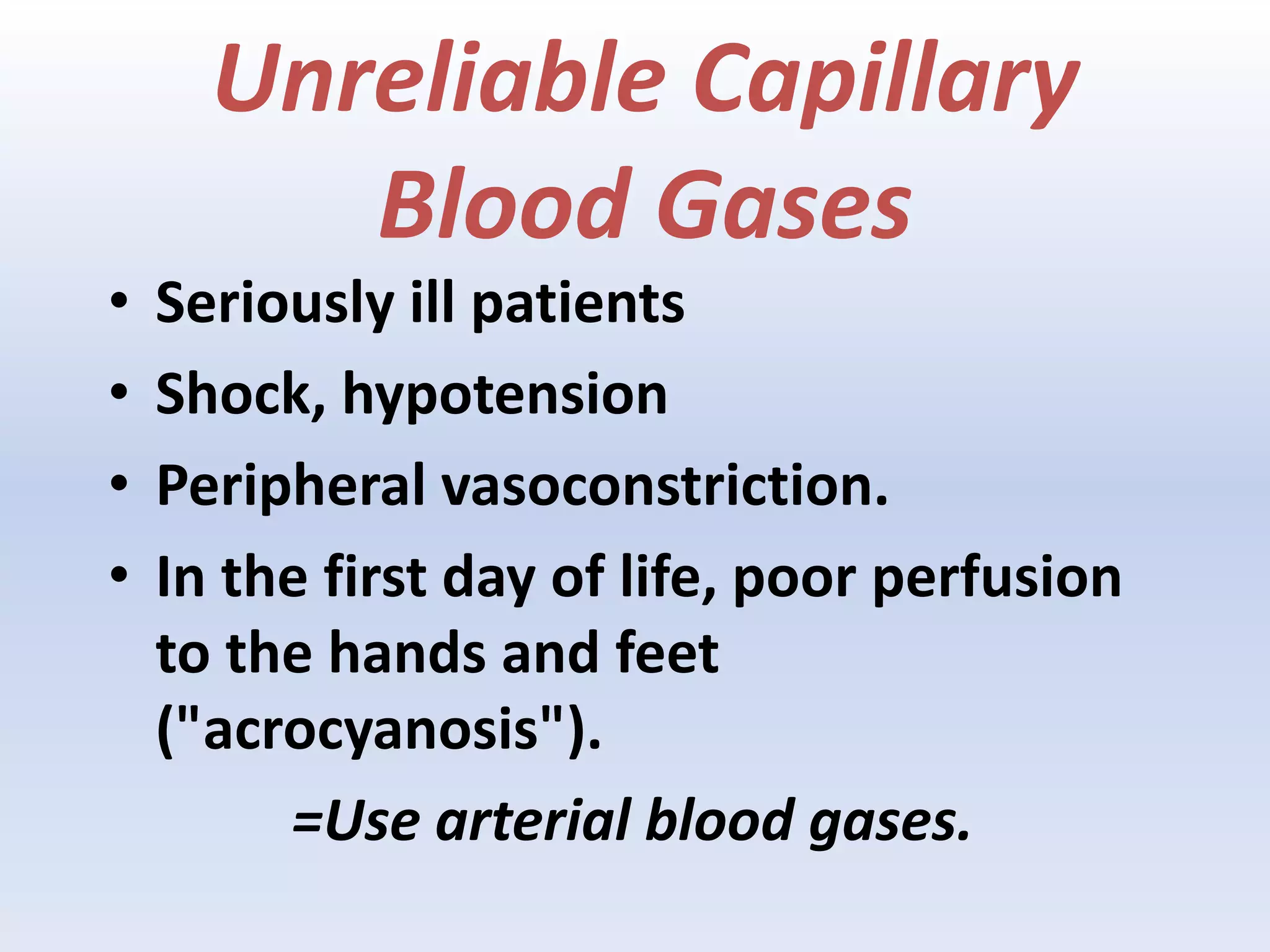The document discusses arterial blood gas (ABG) analysis. It provides information on:
1) What an ABG is and why it is important for evaluating ventilation, oxygenation, and acid-base status.
2) How to properly collect arterial blood, including using heparin as an anticoagulant and analyzing the sample within 10 minutes.
3) A stepwise approach to interpreting ABG results, including determining if acid-base disturbances are primary respiratory or metabolic and if compensations are adequate.













































![• The expected pH for an acute
respiratory alkalosis is 7.40 + [0.008
× (40 - 23)] = 7.54.
• This is the same as the measured
pH, so this is an acute,
uncompensated respiratory
alkalosis.
• If the measured pH was higher than
7.55, this would be evidence of a
superimposed metabolic alkalosis.](https://image.slidesharecdn.com/arterialbloodgasesinterpretation11111-160601211943/75/Arterial-blood-gases-interpretation11111-46-2048.jpg)
![Step five : Anion gap
• AG is a measure of the relative abundance of
unmeasured anions.
• Used to evaluate patients with metabolic
acidosis.
• Determinants of the Anion Gap:
AG= UA - UC = [Na+]-([Cl-] + [HCO3
-])](https://image.slidesharecdn.com/arterialbloodgasesinterpretation11111-160601211943/75/Arterial-blood-gases-interpretation11111-47-2048.jpg)


![• High AG metabolic acidosis is due to
the accumulation of [H+] plus an
unmeasured anion in the ECF.
–Most likely caused by organic acid
accumulation or renal failure with
impaired [H+] excretion.](https://image.slidesharecdn.com/arterialbloodgasesinterpretation11111-160601211943/75/Arterial-blood-gases-interpretation11111-50-2048.jpg)





![•The cations and anions normally
present in urine are Na+, K+, NH4+,
Ca++,Mg++ and Cl-, HCO3-, sulphate,
phosphate and some organic anions.
•Only Na+, K+ and Cl- are commonly
measured.
•Cl- + UA = Na+ + K+ + UC
•UAG = ( UA - UC ) = [Na+]+ [K+] - [Cl-]
Urinary anion gap](https://image.slidesharecdn.com/arterialbloodgasesinterpretation11111-160601211943/75/Arterial-blood-gases-interpretation11111-56-2048.jpg)














































